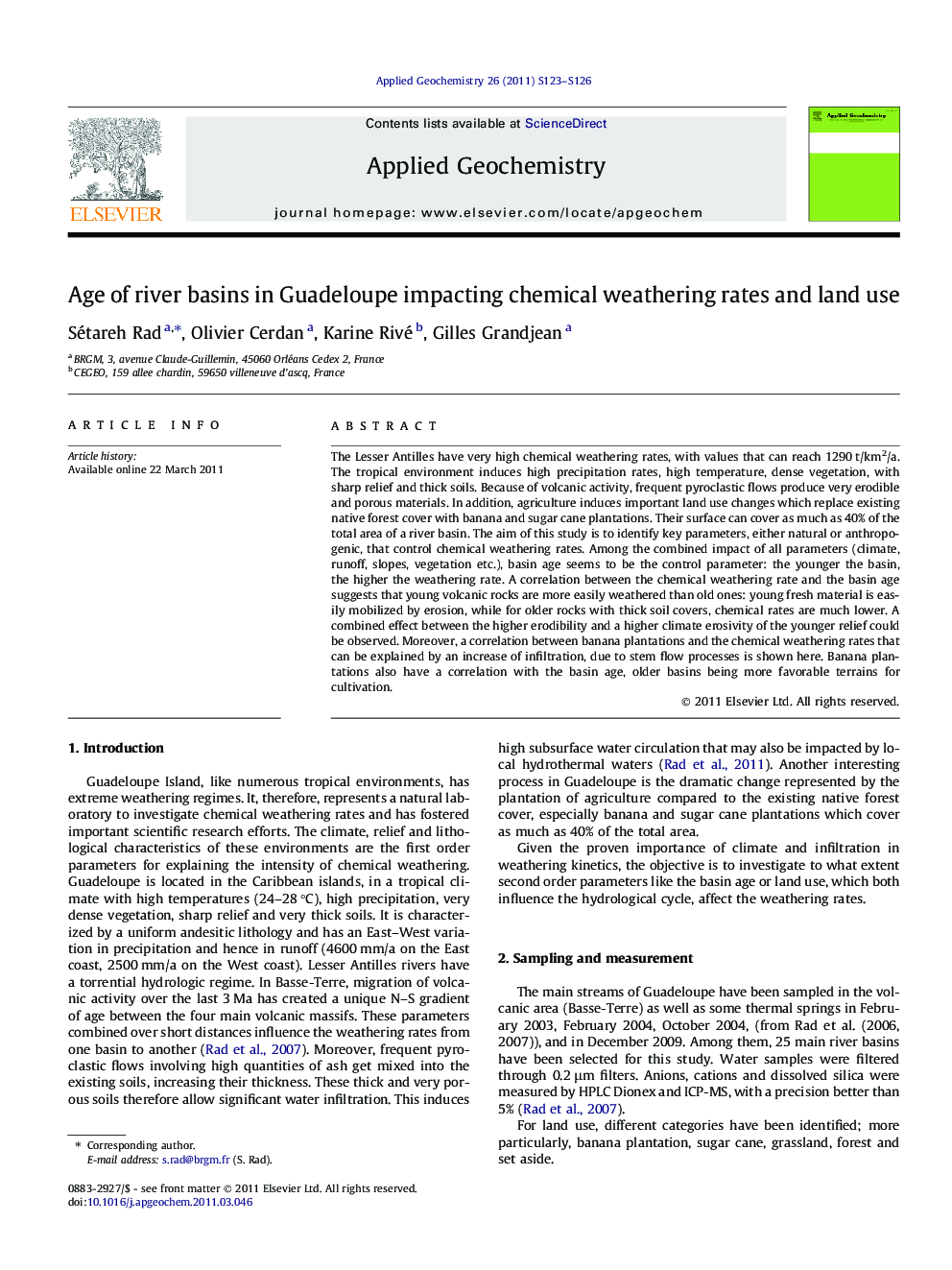| Article ID | Journal | Published Year | Pages | File Type |
|---|---|---|---|---|
| 4436478 | Applied Geochemistry | 2011 | 4 Pages |
The Lesser Antilles have very high chemical weathering rates, with values that can reach 1290 t/km2/a. The tropical environment induces high precipitation rates, high temperature, dense vegetation, with sharp relief and thick soils. Because of volcanic activity, frequent pyroclastic flows produce very erodible and porous materials. In addition, agriculture induces important land use changes which replace existing native forest cover with banana and sugar cane plantations. Their surface can cover as much as 40% of the total area of a river basin. The aim of this study is to identify key parameters, either natural or anthropogenic, that control chemical weathering rates. Among the combined impact of all parameters (climate, runoff, slopes, vegetation etc.), basin age seems to be the control parameter: the younger the basin, the higher the weathering rate. A correlation between the chemical weathering rate and the basin age suggests that young volcanic rocks are more easily weathered than old ones: young fresh material is easily mobilized by erosion, while for older rocks with thick soil covers, chemical rates are much lower. A combined effect between the higher erodibility and a higher climate erosivity of the younger relief could be observed. Moreover, a correlation between banana plantations and the chemical weathering rates that can be explained by an increase of infiltration, due to stem flow processes is shown here. Banana plantations also have a correlation with the basin age, older basins being more favorable terrains for cultivation.
